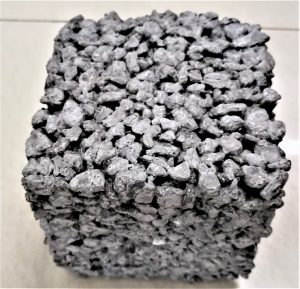Anyone who’s ever lived in a city is probably more familiar than they’d like to be with the urban heat island effect, which causes cities to become significantly hotter than their natural surroundings.

The heat island effect occurs when human activities cause a sharp uptick in urban temperatures compared to surrounding areas. On conventional concrete roads, which typically covers more than 30% of developed surface areas in many cities, the heat island effect can result in sweltering surface temperatures surpassing 60°C (140°F), posing serious risks to the environment and public health. Free-Photos/Pixabay
The effect has many causes, but one big contributor is impermeable concrete. In many cities, impermeable concrete covers more than 30% of developed surfaces, resulting in higher energy bills, greater greenhouse gas volumes, and hotter surface runoff that can imperil aquatic life.
“It’s awful. It makes the temperature higher by one or two degrees Celsius, which is significant, and just makes you feel that much worse in the summer,” said Husam Najm, Rutgers University (New Brunswick, N.J.) professor of civil engineering.
Permeable concrete can help counteract the heat island effect while enhancing stormwater drainage, but only under the right conditions. A study by Najm and engineers from Rutgers and Central South University (Hunan, China) finds that permeable concrete gives off similar levels of heat to conventional concrete during dry conditions, but up to 30% less heat following a storm event. Engineering permeable concrete to transfer heat more effectively under dry conditions could add heat island effect mitigation to the material’s long list of environmental benefits.
Conductivity, cost, and consistency
Right now, the research team is exploring ways to lower emissions from the concrete-production process and facilitate stormwater drainage. Most importantly, though, their research explores ways to improve concrete’s thermal conductivity, a key determinant of the heat island effect’s intensity. But there are challenges.
The team’s first experiments involved manipulating the amount of cement used in the permeable concrete as well as the size of aggregate concrete ingredients like sand, gravel, and crushed stone, Najm said. The team demonstrated the ability to reduce heat outputs from permeable concrete by up to about 5% under dry conditions.

Permeable concrete offers superior stormwater drainage capabilities over traditional concrete but does little to counteract the urban heat island effect. An international research team is working on increasing permeable concrete’s thermal conductivity, reducing its costs, and enhancing its durability, in hopes of making the material a more viable choice in green construction projects. Hao Wang/Rutgers University (New Brunswick)
“Now we’re trying to add fibers. Steel fibers tend to do better in terms of thermal conductivity, but it’s not significant yet,” Najm said.
The comparatively higher price of pervious concrete compared to conventional materials is also an issue.
“Depending on how much stormwater you want to drain, we have to put six or twelve inches of aggregate underneath,” Najm said. “That layer is important because it retains the water until it slowly, slowly drains into the soil. That adds to the cost of this material.”
Another obstacle, which Najm said the research team is close to surmounting, is permeable concrete’s durability.
“It’s very weak — about 50% or 60% less strong than regular concrete. It’s being used in places without a lot of traffic, like sidewalks or parking spaces,” he said. “One of the challenges is trying to make it stronger, so it can be used on roads with heavy traffic from trucks and large vehicles.”
Despite the challenges, the researchers are working hard to make porous concrete inexpensive, attractive, and applicable to people who need it.
“This is a very good material,” said Najm. “In my opinion, all of these problems can be solved.”
Read the team’s full study in the Journal of Cleaner Production.
—Will Fowler, The Stormwater Report





